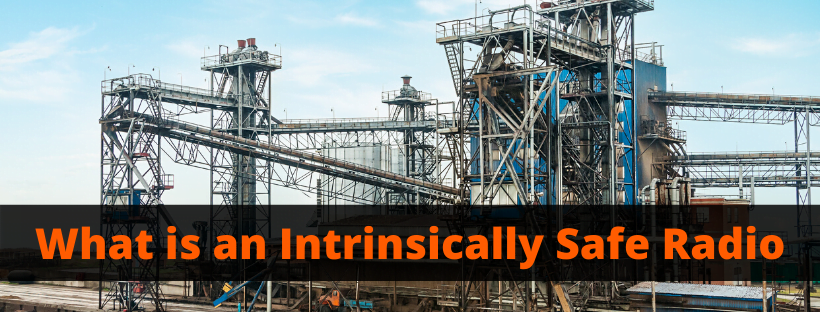The Intrinsically Safe (IS) radio is one of the most critical forms of communication in the Oil and Gas Industry.
Using electronic equipment in a Hazardous Environment requires specific ratings when there are potential risks of explosions. For instance, such environments include oil rigs, refineries, gas mains, coal mines, chemical plants, factories, grain silos, and other environments where there are potentially explosive or hazardous materials. Workers shouldn’t use the standard two-way radios because they may create a dangerous hazard situation.

Intrinsically Safe radios are certified to prevent or eliminate the possibility of generating even the tiniest little spark. Additionally, designs must limit the amount of heat produced by the radio. The battery designs used in the radios must also prevent sparks and eliminate short-circuiting. Even the radio housing design itself must contain materials that resist or eliminate the friction that can create static electricity and generate sparks.
Radio Certification
The National Fire Protection Association set strict manufacturing codes and regulations for Intrinsically Safe two-way radios. Also, Factory Mutual, an insurance and loss prevention company approved by the US government, oversees the enforcement of the NFPA codes in manufacturing facilities.
Radios manufactured as Intrinsically Safe carry the FM (Factory Mutual) Approved certification mark.
The following is generally the USA standard for all industries for intrinsically safe. Specifically, FM Approved radios are approved in Class Ι, ΙΙ and ΙΙΙ, Division 1, Groups C, D, E, F, and G & Class Ι, Division 2, Groups A, B, C, and D.
What features to look for an effective Intrinsically Safe Radio
Most Intrinsically Safe radios contain the features found below:
- IP55 Water and Dust Resistant
- MIL-STD-810-C, -D and -E
- Two Tone and Five Tone Codes
- 512 Channels/128 Zones
- 400-450MHz or 450-512 MHz UHF Frequencies (UHF Version)
- 136-174 MHz VHF Frequencies (VHF Version)
- Privacy Codes
- 5 Watts Transmit Power
- 3 Selectable Power Levels Per Channel
In addition to the radios, any accessories used, such as microphones and headsets, need to be intrinsically safe. You can browse our catalog of Intrinsically Safe radios and more here.


